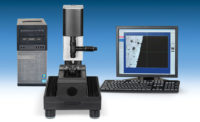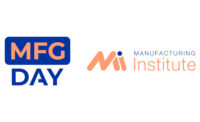DEARBORN, MI-- The Society of Manufacturing Engineers (SME) today announced details about Prodrive's development of the Mini John Cooper Works World Rally Car (WRC) and a keynote presentation to be given by Paul Doe at the RAPID 2012 Conference and Exposition Conference and Exposition, May 22-25 in Atlanta, GA. Prodrive's use of 3-D printing will reveal the future of manufacturing and appeal to any organization looking to capitalize on additive manufacturing technologies that speed new products to market.
"Additive manufacturing is instrumental for many product development companies, and we're excited to showcase Prodrive's 3-D printing success story with Paul Doe's keynote presentation at RAPID 2012," said SME business development manager Gary Mikola.
Prodrive is responsible for the design and engineering of the Mini John Cooper Works World Rally Car. The company uses additive manufacturing to accelerate the development of the race car and reduce production costs. Prodrive's 3D printers created functional prototyping, rapid tooling and end-use parts with polycarbonate and ABS materials direct from computer-aided design(CAD) files.
"3-D printing is an important part of our design and development process that has massively reduced our reaction time," says Prodrive chief design engineer Paul Doe. "The technology allows us to produce new parts for the test car within hours of a problem or need being discovered."
During his presentation, Doe will share how the Mini John Cooper Works WRC team relied heavily on 3-D printing throughout the car's two-year development cycle. To design the test car, engineers used additive technologies to create large parts of the engine bay, multiple display housings, gearbox, steering assembly, vehicle interior and even engine components. In addition to prototyping parts for the test track, the team 3-D printed end-use parts for the finished car. The ergonomically styled gearshift display and control panel, which is mounted on the steering column, are the WRC's most visible 3-D printing examples.
"3-D printing has created opportunities to innovate that were previously considered a dead-end without a significant investment in tooling and has freed our team from the constraints that are applied when manufacturing by more traditional production methods," says Doe.
Attendees will discover how Prodrive's WRC program was one-fifth the cost of similar projects that specified traditional manufacturing methods. As a result of these cost savings, the number of parts produced by additive manufacturing technologies for Prodrive's development programs continues to increase.
"3-D printing improved our overall prototyping and manufacturing process by giving our team the ability to make high-performance, end-use components that would have been very expensive to produce by any other method. The simplicity of 3-D printing combined with the relatively low cost of materials make it the obvious choice for manufacturing parts and offers significant advantages to our program," Doe added.
Paul Doe has 15 years of experience in race vehicle design, working at the forefront of the World Rally Championship with Mitsubishi, Subaru and MINI. He also worked with Aston Martin Racing in the development of the 2009 Le Mans Series winning DBR1-2 LMP1 car.
Get our new eMagazine delivered to your inbox every month.
Stay in the know with Quality’s comprehensive coverage of the manufacturing and metrology industries.
SIGN UP TODAY!Copyright ©2024. All Rights Reserved BNP Media.
Design, CMS, Hosting & Web Development :: ePublishing


